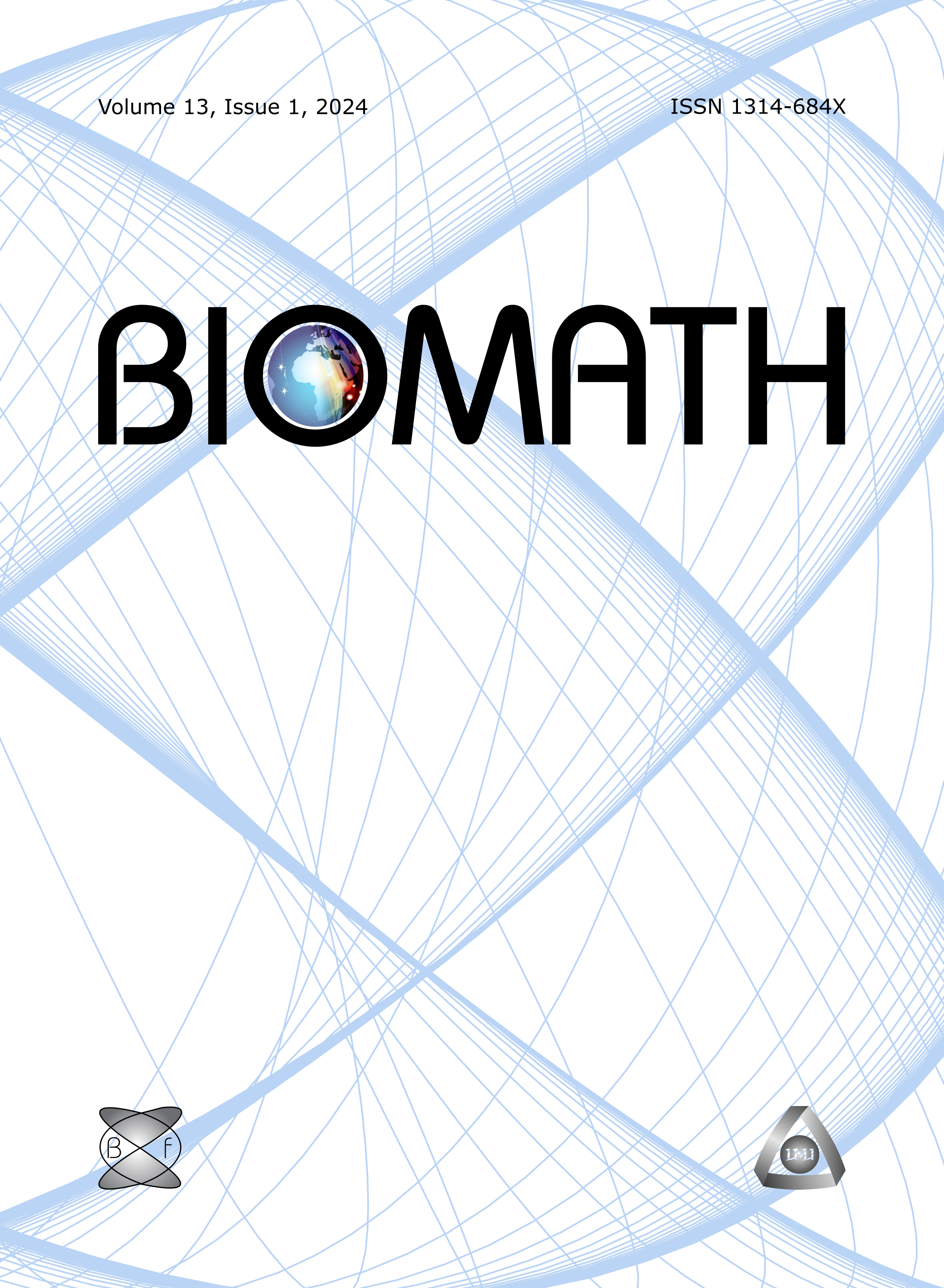Topological Process of Splitting DNA-Links
DOI:
https://doi.org/10.55630/j.biomath.2022.03.288Keywords:
DNA, replication, link, topological model, repliconAbstract
A DNA replicon is modeled by a special type of 2-component link, called a DNA-link, in which two circles form a double helix around a trivial center core curve. The DNA replication process is semi-conservative, which is interpreted as a splitting process of the DNA-link. To split this non-trivial link, the linking number must become zero, and thus an unknotting operation is necessary. Some families of enzymes act as the unknotting operation. The present paper considers two topological problems; one is to know how the linking number is reduced and the other, how the enzymes are allocated at appropriate places. For the first problem, we suggest a reduction system of the linking number of a DNA-link. From this system, the number of repetitions of the procedure is obtained and this could be reduced when the DNA is previously relaxed by type I topoisomerases. For the second problem, we propose a possible conformation of the DNA-link in which the unknotting operation does not change the knot type of the core curve but decreases the writhe. This conformation could allocate type II topoisomerases to appropriate places. These models suggest that the combination of type I and type II topoisomerases efficiently reduces the linking number and it is possible to allocate enzymes by the conformation of DNA strands.
Downloads
Published
Issue
Section
License
Copyright (c) 2022 Abdul Adheem Mohamad, Tsukasa Yashiro

This work is licensed under a Creative Commons Attribution 4.0 International License.
The journal Biomath is an open access journal. All published articles are immeditely available online and the respective DOI link activated. All articles can be access for free and no reader registration of any sort is required. No fees are charged to authors for article submission or processing. Online publications are funded through volunteer work, donations and grants.
Authors who publish with this journal agree to the following terms:
- Authors retain copyright and grant the journal right of first publication with the work simultaneously licensed under a Creative Commons Attribution License 4.0 that allows others to share the work with an acknowledgement of the work's authorship and initial publication in this journal.
- Authors are able to enter into separate, additional contractual arrangements for the non-exclusive distribution of the journal's published version of the work (e.g., post it to an institutional repository or publish it in a book), with an acknowledgement of its initial publication in this journal.
- Authors are permitted and encouraged to post their work online (e.g., in institutional repositories or on their website) prior to and during the submission process, as it can lead to productive exchanges, as well as earlier and greater citation of published work (See The Effect of Open Access).

